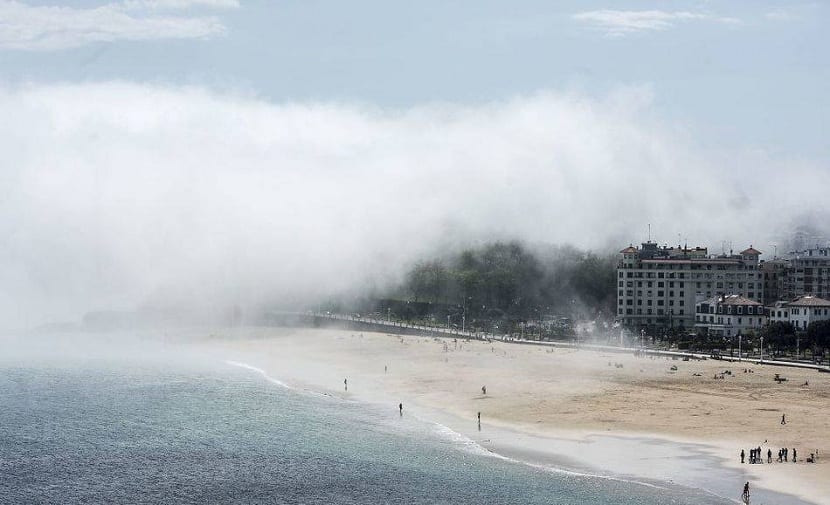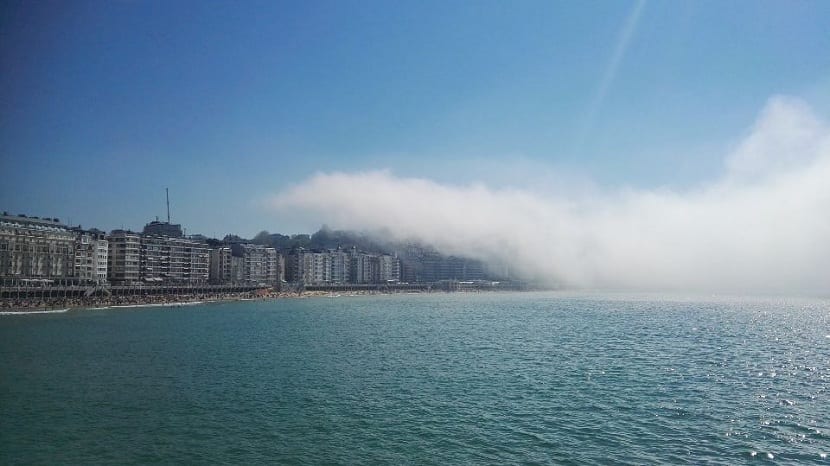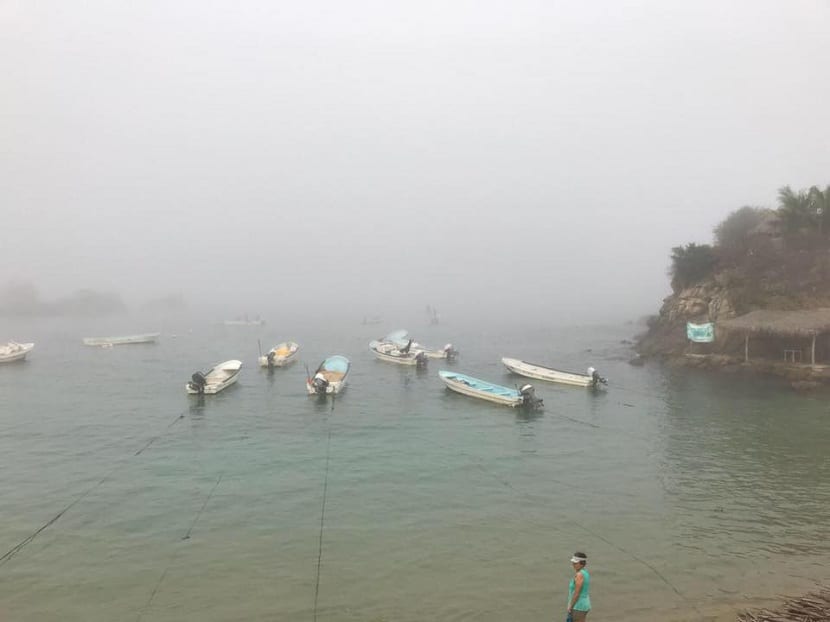
There are meteorological phenomena such as fog that occur when the clouds are at ground level. Certain environmental conditions are needed for this to occur. Fog usually reduces visibility and can lead to some accidents. You've surely heard of the fog.
In this article we explain what mist is and how it is related to mist. In addition, we tell you its characteristics and conditions for its training.
What is haze

The cause for which the fog appears is varied, although it almost always responds to some more specific conditions. The first condition that must be met for the fog to form is drastic cooling of the soil at night. When the soil cools in quantity, a layer of more humid air appears in the near part of the soil. If the air accumulates near the ground and stays humid, it will cause saturation. Another condition for fog formation is when a warmer air mass moves over colder terrain. It can also occur when hot air travels over a colder ocean current (hence, in places with ice caps it is usually seen).
However, the mist alludes to Winter Solstice according to its etymology. In the past, mist was used to name the winter season. This has changed today. Now this word is used to refer to fog. More specifically to the fog that occurs in the ocean. As we mentioned before, this occurs when a mass of hot air approaches a stream of water that is at a lower temperature. This is how the water becomes saturated and turns into water vapor that will give rise to haze.
The immediate consequence of haze is that, as it is a phenomenon in the atmosphere in which there are more water particles suspended in the air that are saturated, makes visibility difficult. Mist can be dangerous for boats as it can hit something. Although this danger has been greatly reduced in recent years by the GPS guided tracking system.
Composition and characteristics

In more meteorologically technical terms, haze is like a kind of mist. It differs from the main one in its level of moisture. To be considered haze, the humidity level must be equal to or greater than 70%. This is not the case with conventional fog. When this kind of fog happens, As there is so much humidity in the environment, visibility is significantly reduced at just 1 km away.
The composition of the mist is hygroscopic nuclei and water. It differs mainly from common fog in the amount of water in the environment and the haze, which is formed from dry particles. Hygroscopic nuclei are nothing more than small drops of saline solution or particles of salts that come from the oceans and seas that are carried by the action of the wind. These particles end up in the atmosphere and condense with the humidity in the air. For saturation to occur, there must be a lower temperature than a higher one.
Since there is some confusion with these terms, many people misuse the concepts of mist, fog, mist or haze. To summarize, Fog is the concentration of water particles that forms a cloud at low altitude and makes vision difficult. On the other hand, the rest of the concepts are derived from fog. That is, they are different types of fog depending on the characteristics they have and the atmospheric conditions in which they are formed.
In the figurative sense, the lack of clarity can also be called mist, not for the simple fact that it has said meteorological phenomenon. It is used in the language to refer to the difficulty of being able to express or think correctly or that you cannot see a certain object. You've probably heard the expression "I'm overwhelmed."
Possible hazards of haze

Haze is one of the common weather conditions in our country. We cannot deny that, although it makes vision difficult, it can help to take incredible photos of landscapes. In mountainous areas, plains and certain valleys is where these mists occur most. This without counting, obviously, with ocean currents. Cloudiness is more frequent in the Cantabrian and northern peninsular areas. However, the frequency of the presence of the Azores anticyclone in winter allows for more than 80 foggy days per year.
For example, in the area of the Guadalquivir depression we find many days a year with fog.
Among the possible dangers that haze can offer us, it mainly affects drivers. If you are walking and visibility is more complex, you don't have too much trouble or danger. Things change tremendously when you are driving in a vehicle. If you are not familiar with driving in fog, it is easier for you to have an accident because you are not used to interpreting things through lower visibility.
When you are in a vehicle and you encounter fog in coastal areas, it is best to position the low beams so that you are seen. You do not have to put the long because what you will do is make the situation worse. Evidently, Driving at a slower speed will reduce the chances of a collision. If you go with other vehicles in front or behind, increase the safety distance.
To remove the moisture from the mist on the windshield, use the windshield wiper. Surely you have ever heard the saying "foggy mornings, afternoons for a walk." This means that the fog has its maximum appearance in the morning and, as the ground warms up by the action of the sun, it clears. Wind is another element that can help remove haze.
I hope this information has helped you to know more about the haze.
Thank you for joining us in this breakfast at sea and clarifying all our doubts about the mist.